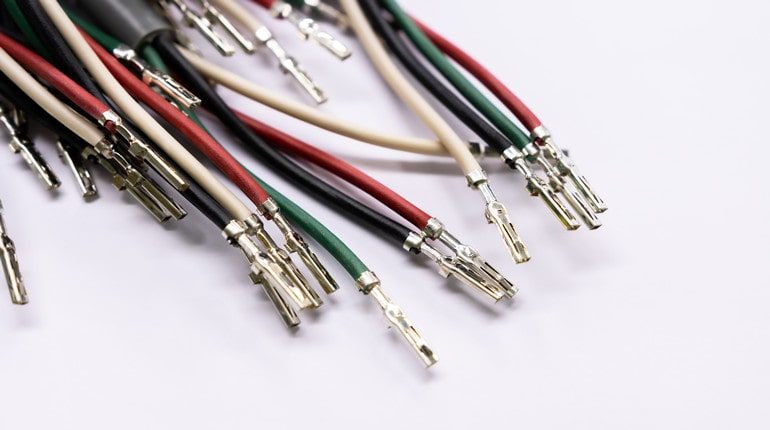It’s not uncommon for cable assemblies and wire harnesses to be confused with each other, which is understandable as they have many common attributes. This article will clear up any confusion and ensure you’re fully equipped to choose the right product for the right environment.
Why are wire harness and cable assembly often confused?
It’s not uncommon for wire harnesses to be confused with cable assemblies, as many professionals use the terms’ wire harness’ and ‘cable assembly’ to mean the same thing. To further add to the confusion, a wire harness can sometimes be called a cable harness or a wire assembly, so confusion is understandable, especially when some professionals use different products for the same function.
However, these two products are different from each other.
Wires vs. cables
A wire is a single strand of material, usually copper, aluminium, or steel. It has a single-use purpose, which is to conduct electricity to carry either power or data.
However, a cable has at least two insulated wires in a single jacket. Usually, there is a neutral, positive, and grounding wire within the jacket, resulting in them simultaneously being able to carry both power and data.
This means that a single wire can’t provide the same needs that a single cable offers.
What is a wire harness or a cable assembly?
Now that we understand the difference between wires and cables let’s consider what a wire harness is and how it differs from a cable assembly.
Wire harnesses
A wire harness is a system that keeps multiple wires neat after they have been laid out and can range from very simple to complex layouts. In more complicated arrangements, wires can run in many different directions, but they will be bound together by cable ties, heat shrink, or electrical tape, with a range of termination components. By bundling wires together, you are creating a better organised system that will be easier to work with in the future.
Wire harness advantages
The predominant advantage of a wire harness over a cable assembly is cost. That will, of course, depend on the number and quality of wires and the connectors used. However, overall, wire harnesses a cheaper to purchase.
Cable assemblies
Cable assemblies are similar in that they follow a predetermined layout. However, the most significant difference is that a cable assembly can have multicore cables and wires within the design. In addition, the wiring system is put into a protective sheath typically made from a heavy-duty protective material such as heavy-duty thermoplastic rubber. This layer protects against friction, heat, vibration, chemicals, UV exposure, and the elements.
Cable assembly advantages
A cable assembly is easier to manoeuvre in small spaces, as all the wires are within a single jacket. The additional protective layer is also a big advantage over a wire harness.
Important distinctions between wire harnesses and cable assemblies
Knowing the main differences between wire harnesses and cable assemblies can be challenging. So let’s look at them below:
• A wire harness is a cover that encases multiple single cables or wires, whereas a cable assembly has the appearance of one single thick wire
• A wire harness has multiple ends running in different directions, while a cable assembly typically has two ends
• A cable assembly will survive compression and wear and tear much better than a wire harness
• Wire harnesses are usually only used indoors, while cable assemblies can be used both indoors and outdoors
• Cable assemblies are typically designed to a superior standard to suit specific environmental factors such as humidity or heat tolerances.
• There is a limited load capacity on a wire harness depending on how many cables are bundled together
• It is easier to thread cable assemblies around small spaces as you are only working with one cable as opposed to many
Cost differences between wire harnesses and cable assemblies
Wire harnesses tend to be cheaper than cable assemblies. Because they act as a cost-effective way to keep cables and wires organised, with little in the form of protection, fewer materials are needed to build them.
Cable assemblies, however, will come with a price premium with the added protection.
An additional factor that isn’t always considered when it comes to cost is the cost of installation. While a wire harness may be cheaper to manufacture and purchase, it may be difficult to weave together if the harness is complicated. This will cause an increase in the installation time, resulting in increased labour costs.
It’s essential to understand the difference between these two products. While the functions of each wire harness and core assembly are very similar, significant differences separate them in their applications and environments.
For more information on either of these and to find out which method is best used for the job you face, then get in touch with us, and we will be able to give you our professional advice.



